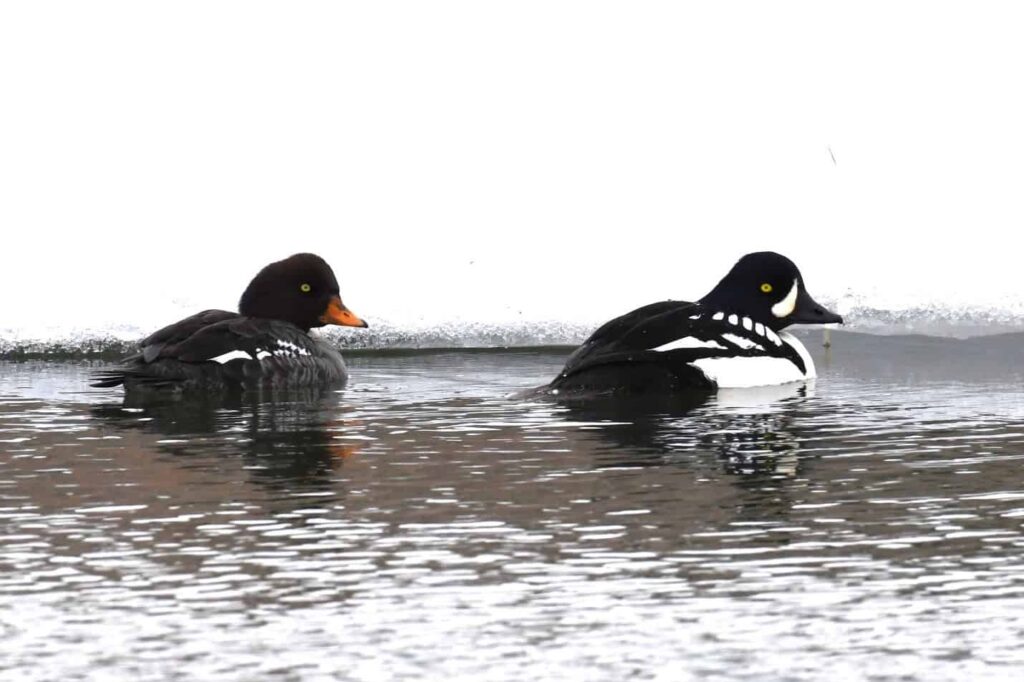
Spring is slow to come at 7,000’ elevation. According to our on-site weather station observations, the average temperature for the month of April was 32 degrees F., and May has had its fair share of snow showers. But as the snow and ice melted we received our first spring arrivals (Figure 1).

Figure 1: Female (L) and male (R ) Barrow’s Goldeneye
Barrow’s Goldeneyes show up as soon as there’s any open water around. These charismatic ducks are more common further north, but like several other species, the southern edge of their breeding range lies within the Yellowstone Ecosystem.

Figure 2: Probable vole nest exposed after snowmelt. Wyoming Mountains in the background.
Other signs of life appear as the snow melts. The nests (Figure 2) and tunnels (Figure 3) that mice and voles created in the subnivean (under snow) zone during the winter are exposed. Surprisingly, the deep snows of winter create a safe and relatively warm habitat for small mammals.

Figure 3: grass-lined tunnels created by mice or voles exposed by melting snow.
Once snow sticks to the ground, the layer in contact with the ground melts or sublimates, and the resulting water vapor rises into the snowpack, where it freezes and forms an icy layer (Figure 4).

Figure 4: The subnivean zone Link to image
The snow above the ice layer provides great insulation, so the resulting space between the ground and snow remains near 32 degrees throughout the winter. Protected from most predators by this blanket of snow, rodents and shrews are free to move around at will. Some species even breed during winters as it can be safer to do so then than during summer. However, life is never risk-free for small mammals. Short-tailed weasels hunt them in their tunnels, while red fox and Great Gray Owls use their hearing to locate and then pounce on them. But on balance, life is safer for rodents in winter, as evidenced by the southward migration of most of the raptor species that prey on them from spring through fall.